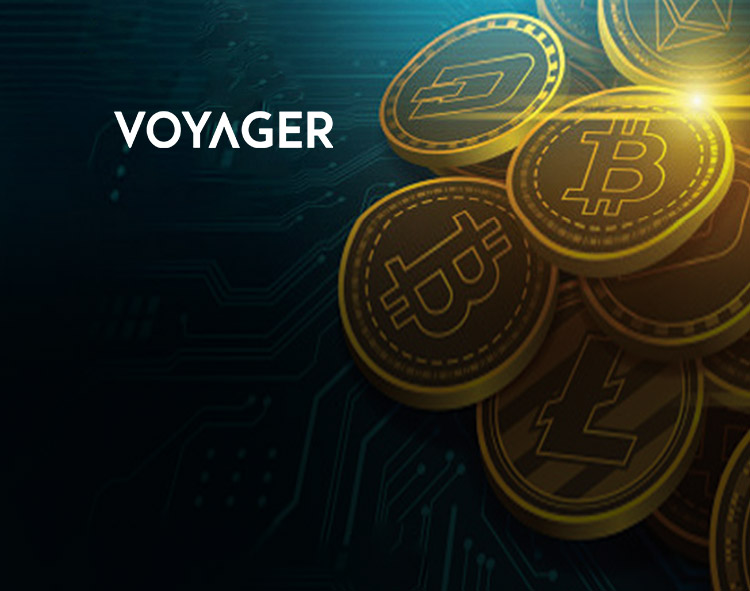What happened to Voyager?!?

Yikes!
I’m sailing along enjoying my day and I get an email. Voyager Digital, a leading cryptocurrency exchange, has “temporarily” suspended ALL trading, deposits, withdrawals and loyalty rewards, effective at 2:00 p.m. Eastern Daylight Time, July 1, 2022.Wait…what? I had some crypto in there.
The word “temporarily”, in this case is interchangeable with “indefinitely” since according to Stephen Ehrlich, Chief Executive Officer of Voyager, “This decision gives us additional time to continue exploring strategic alternatives with various interested parties while preserving the value of the Voyager platform we have built together. We will provide additional information at the appropriate time.”
How much time? Good question.
Guys like me, long in the tooth in the financial services industry, understand that spin all too well – they’re currently insolvent and it’s ‘all hands on deck’ to find somebody to bail them out before the peasants storm the gates with rakes, pitchforks and torches. For those of you who are not familiar with the brand, Voyager Digital LLC is — or maybe I should say used to be — a cryptocurrency investment firm. You deposited dollars or crypto into Voyager, and you could earn up to 12% interest on your deposits. Their mobile app allowed you to trade about 100 different cryptocurrencies commission-free and they also even offered a debit card. Customers were encouraged to deposit their US dollars (which were supposedly insured by the FDIC through their banking partner Metropolitan Bank), which were immediately converted to the USDC stablecoin, which Voyager then paid a yield of up to 9% on. “Earn like crypto, spend like cash.” from a Voyager promo The company claimed 3.5 million customers. As of June 30, Voyager Digital disclosed that it held just over $685 million worth of crypto assets, but that it had loaned out $1.12 billion worth. It also supposedly held just shy of $356 million worth of customers’ cash and was holding nearly $168.7 million worth of crypto collateral. They revised those numbers immediately after the announcement on July 1. How screwed is Voyager now? A little over two thirds of their assets are MIA.
So what happened?
Well, even really smart guys get hoodwinked once in a while, and the decision-makers at Voyager thought it was a wise business decision to lend the Singapore-based hedge fund Three Arrows Capital (3AC) 15,250 Bitcoins and $350 million of the stablecoin USDC. At recent prices, the total loan equates to more than $680 million. In other words, about the same amount that Voyager held on June 30 in total crypto currency.3AC defaulted on that loan.
The once-mega fund, founded by Credit Suisse traders Zhu Su and Kyle Davies in 2012, managed an estimated $10 billion in assets at one point and was a kingpin dynamo among crypto finance players. They have since filed Chapter 15 bankruptcy in New York, which will allow the foreign firm (3AC is based in Singapore) to protect its stateside assets while the liquidation is carried out in the British Virgin Islands following recent a court order there. Its insolvency has forced other major industry players to reshuffle operations and limit customer withdrawals as well amid a crypto selloff that, for whatever reason, despite the fact that it has happened every Bitcoin cycle to date, seemed to catch plenty of them off guard.
But Voyager Digital is not a bank.
If they were a bank, “insolvency” is the key element of a bank failure. That’s a scary scenario if you have your money in a failing bank, but if you’re not aware, you might find it surprising to learn that banks fail all the time. In fact, there were 561 bank failures in the US from 2001 through to the beginning of 2022. They don’t get much news beyond maybe the local community because we’re not talking about the “too big to fail” banks like Bank of America. And when banks fail the FDIC (Federal Deposit Insurance Corporation) comes in to rescue depositors. Normally, that happens in just a few days’ time, since, in most cases, a financially healthy bank will take over the failing banks assets and with the help of the FDIC own reserves, cover any excess losses. Voyager repeatedly and consistently, anywhere and everywhere, led customers to believe their US dollar deposits were safe, insured up to $250,000 by the FDIC, if Voyager failed, the truth was revealed in small print when you signed up. They counted on the fact that nobody reads that stuff. Customers’ dollars were transformed into Voyager’s USDC the moment they were deposited, Voyager then used the USDC as collateral for loans it took out elsewhere.So was their claim of FDIC insurance a straight up lie?


That second sentence being especially important in this case.
Voyager would be considered “a deposit broker” acting as a fiduciary on behalf of its account holders, meaning the FDIC pushes the onus of providing proper documentation BACK to Voyager before any payouts are made. For anyone NOT familiar with that term, a “fiduciary” is a person (or company) who serves as an agent on behalf of their client(s) in opening a deposit account or purchasing assets (in this case various forms of cryptocurrency) via an insured entity. In order to determine the deposit insurance coverage for such deposits, the FDIC will need to obtain from the fiduciary (Voyager) supplemental information such as a complete list of the owner or owners of each deposit and the dollar interest of each owner in the deposit account.Here’s the kicker.
In a set-up like Voyager, even though the FDIC provides what’s called “pass-through deposit insurance coverage” to the actual account owners of any fiduciary-linked deposit(s), the FDIC does NOT pay that deposit insurance DIRECTLY to the owners or customers. Instead, the FDIC will pay the deposit insurance coverage to the fiduciary (Voyager). In turn, Voyager (acting its capacity as a fiduciary) will then be responsible for distributing the deposit insurance payments to their customers. And perhaps even more importantly, the FDIC does not attempt to supervise the relationships between fiduciaries and customers or the distribution of funds from fiduciaries to customers. Metropolitan Bank isn’t failing. In fact, they’re being sure to CYA, in a recent statement by Metropolitan Bank, it said “The omnibus account holds US Dollars only. It does not hold cryptocurrency or any other asset.” And further “FDIC insurance does not protect against the failure of Voyager, any act or omission of Voyager or its employees, or the loss in value of cryptocurrency or other assets.” So, as soon as Voyager provides the needed information (and unfortunately there is no forced timeline here) since this is a completely new situation, there will likely be some announcement that anyone who thought they were entitled to some form of restitution by Voyager is SOL (Shit Outta Luck). It also doesn’t help anything that Voyager is being sued for trademark infringement by US Bank in Federal Court in Minnesota, for their use of the word Voyager on its debit card, a trademark that US bank has held for decades. Duh. And at the end of this past March, Voyager got cease and desist letters and orders from the state securities agencies in Alabama, Kentucky, New Jersey, Oklahoma, Texas, Vermont, and Washington, who consider Voyager’s yield platform to be an unregistered offering of securities. Or that they’ve been running at a $40+ million annual operating loss for like…ever.
When it rains…it pours.
Full disclaimer: I do (or did…who knows what happens with the cryptos) have a few cryptocurrencies stored in a Voyager account. Not really anything I will lose sleep over but a pisser nonetheless. However, this is EXACTLY why I have active exchange accounts in five different exchanges and keep most of my cryptos locked up OFFLINE. This is a perfect example of the saying “Not your keys, not your crypto”.Teachable moment here for all you novice crypto investors.
I will note that I can still log onto the Voyager app and watch my portfolio go up and down, but of course, I can’t sell, trade or transfer anything. That has got to be super painful to some friends of mine that were all-in on Voyager and all its financial products, or anyone that had some serious money parked there. BTW, for future reference, according to the FDIC, LLCs cannot be banks, ever. So when you see “LLC,” any claim of FDIC insurance is false, and customer documents supplied by third-party companies (like Voyager in this scenario) become public record, so any privacy you thought you may have had with Voyager is out the window.So what now?
Well, in a comedy of errors Voyager was auctioned off to the then golden child of crypto, Sam Bankman-Fried’s FTX exchange…whihc then went bankrupt! Turns out FTX may have been just a big Ponzi scheme. So back on the auction block Voyager goes and is snapped up by Binance US. Just a couple weeks ago I received an ‘opt in’ request to agree to be paid some yet to be determined percentage of a crypto valuation of my holdings on July the 5th of 2022. Meaning, regardless of the fact that my still working Voyager app shows that value significantly higher today, I’ll get only some percentage (rumor is around 70%) of the holdings I had back in July. Honestly, I had written off the whole amount as a loss so literally anything I get back will be a bonus. Stay tuned and we’ll see how this all falls out once the dust settles.Subscribe to my blog so you’ll get alerts when new posts like this come out.
And if you haven’t done so already, get my book and learn how to plant your own money tree.

